Wondering how to reverse a car? Reversing or backing up a car can be so confusing, especially for new drivers. Don’t worry if it’s your first time driving backwards – or forwards – and you are feeling lost wondering how to back up a car. It just takes a little bit of practice. And we have lots of info to help you make sense of this whole thing, including:
- How to properly start the reversing process
- Reversing safety protocol and tips
- Where to look when reversing
- How to do the 360 checks and when
- Reversing exercises to improve the skill
- Where it’s illegal to reverse a car
How to Reverse a Car
Shift Into Reverse First
Of course, when you’re about to reverse park, you would normally check your mirrors and signal your intentions. Then, the first thing you should always do when you’re about to reverse or park is to shift your vehicle into reverse gear.
This sounds obvious, but this is important because:
- It will activate the white, reversing lights on the rear of your vehicle.
- This alerts other people around you that you plan to reverse; most are not psychic
Reversing a car: while cars can’t talk, this is how they “say” they are in reverse gear
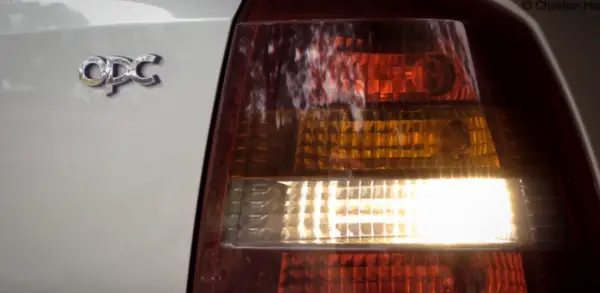
If you don’t shift into reverse before reversing a car, the people driving behind you might not realize you want to back up. They might drive too close behind you, maybe making it impossible for you to perform your maneuver.
Say you want to parallel park. If you don’t shift into reverse in a timely fashion, other people might think you are simply planning to turn right.
So, in light of the very obvious fact that we can not normally talk to – or hear – other drivers around us, or read each others’ minds… This is a crucial step to communicate your intent about beginning your reversing adventure. This is necessary because the other road users around you may be affected by your actions.
Do Your 360-Degree Check Before Reversing a Car
The second thing you should always do any and every time you shift into reverse is the 360-degree check. Some people call this a circle check.
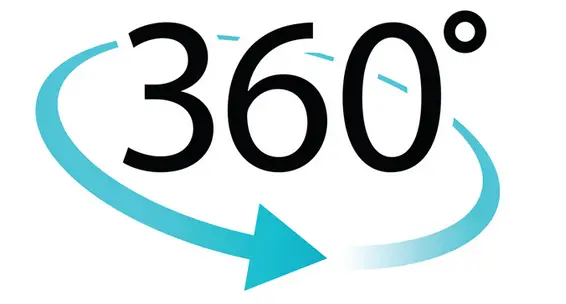
When you’re going to be reversing a car, it’s a lot more difficult to see what is going on around your vehicle as opposed to when you’re going forwards. This is because when you’re backing up, the rest of your entire vehicle is blocking your view.
Cars commonly reverse in parking lots, driveways, and malls.
These are areas where there is a high probability that there will be pedestrians walking, kids, dogs, skateboarders, other people reversing, etc. There are blind spots where each and every one of these things can ‘hide.’
So, it’s important to check around your vehicle in a full circle every time immediately before you reverse, especially remembering that people and cars are moving things.
One second there is nothing there, and one moment later, the entire scene can be different.
The idea is to spot any approaching hazards, and be aware of everything that is going on around your vehicle, in a full circle, the moment before you reverse; which minimizes time going by and the situation changing.
Pro Tip: Grab some mini blind spot mirrors or a convex rear-view mirror from Amazon or somewhere else. These can literally be your extra eyes, and help you to see so much more.

If you’re going to reverse to the right or in a straight line, look over your right shoulder when you’re reversing. This is so that you’re looking in the direction your car is going.
When you drive forwards, you look forwards. When you drive backward, look backward. So simple.
- Like, turn your head and look behind you. Looking in the mirror does not count! This is because blind spots are a huge problem when backing up.
In this situation, you should start your 360-degree check from the left to the right.
This means, doing a left shoulder check, scanning the left mirror, scanning the rear-view mirror, scanning the right mirror, and then looking over the right shoulder to back up.
If you’re going to reverse to the left, it means you’ll be looking left so that you are looking in the direction your car is going. So, you should start your 360-degree check from the right.
This means, doing a right shoulder check, scanning the right mirror, scanning the rear-view mirror, and then looking over the left shoulder (most of the time) while reversing.
When You Are Finished Reversing
As soon as you are finished reversing, always shift out of reverse right away. Like now, not later. Shift into the park, or drive gear, or neutral; something else, anything else, other than the reverse.
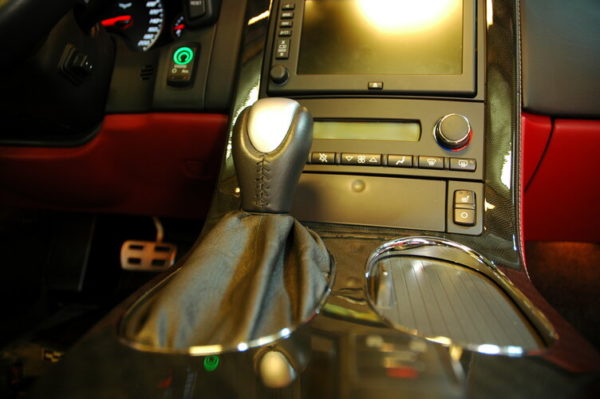
Do not stay in reverse gear, while you ponder the universe, check your email, or sit in the car waiting for someone.
People have forgotten that they’re in reverse and have accidentally backed up and caused collisions. This is very easy to do and only takes a split second.
This could be particularly devastating if you were in a parking lot where pedestrians were walking behind your vehicle. Many automatic cars especially, could start moving backward the instant you remove your foot from the brake. Make this a habit that you do automatically without thinking.
How to Reverse a Car – Your Seat belt Is Optional When Reversing
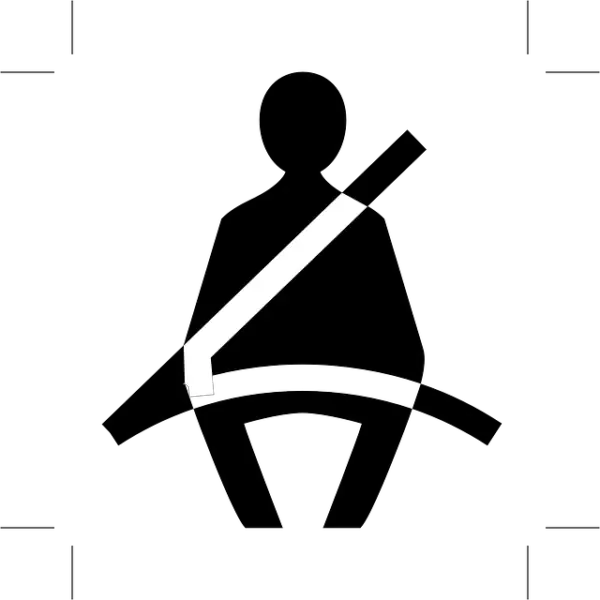
You’re allowed to remove your seat belt in beautiful British Columbia when reversing a car if it makes things easier for you. Remember, though, that as soon as you are in a forward gear and moving in a forward fashion again, then you must legally have it on again.
How to Reverse a Car In a Straight Line
Shift to reverse & perform your 360-degree check. Place your left hand on the top/middle of the steering wheel (12:30).
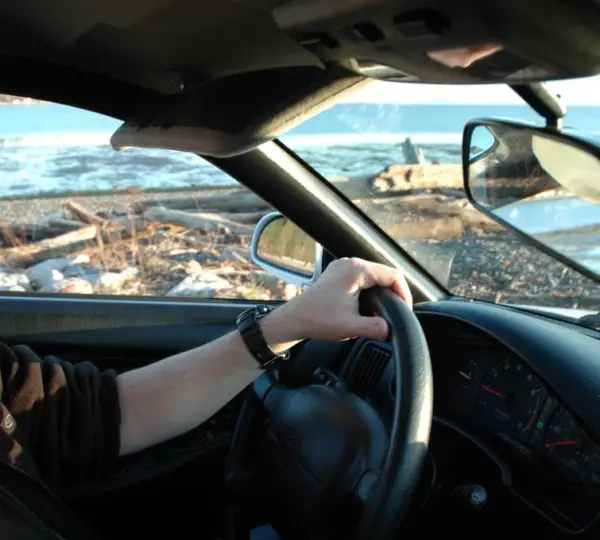
Look over your right shoulder through the rear window. Focus on something in the middle of the window, if possible, such as a tree or parked car that is directly in the center of your rear window.
The car goes in the direction you are looking. It’s a real thing. Proceed at a walking pace. This is the only time that you are allowed to have only one hand on the steering wheel during the ICBC road test. Be sure to check out my epic article: ICBC Road Test Tips For Classes 5 & 7 [Instructor Gets Deep].
How to Reverse a Car To The Right
- Shift to reverse & perform your 360-degree check
- Look over your right shoulder out the rear right window, or wherever you can see the most
- It’s okay to check the front of the mirrors momentarily
- You should use two hands to steer unless or until you’re backing up in a perfectly straight line, as above.
Which way to turn the steering wheel when reversing a car?
A lot of new drivers are confused about this, so don’t worry if you are one of them. It’s very simple. Think about it this way: it is the same direction as when you are driving forwards when you want your car to go rightwards.
- If you are driving forwards and you want to turn right, you turn the steering wheel to the right, right?
- So, when you are driving in reverse and you want to turn the car backward and to the right, simply turn the steering wheel to the right.

The exception of course is if you are reversing a trailer. If you’re backing your boat into the water, and you need your boat to go to the left, you need to turn your steering wheel to the right.
Which is really confusing and very terrible for dyslexic people like me. But we are just talking about the basics here for now.
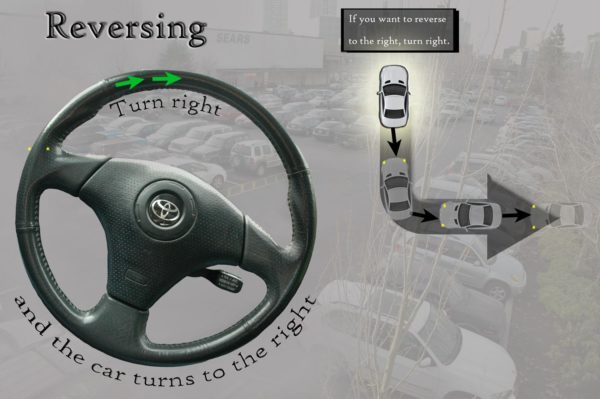
To Reverse A Car To The Left
- Shift to reverse & perform your 360-degree check
- Look over your left shoulder most of the time, out whichever left window that you can see the most
- It’s okay to check the front of the mirrors momentarily
You should use two hands to steer unless or until you’re backing up in a perfectly straight line, as above.
Don’t Reverse A Car Where It’s Illegal
In beautiful British Columbia, it is illegal to reverse:
- Into an intersection and
- On a crosswalk and
- Anytime it’s unsafe
British columbia Motor Vehicle Act
193: Caution in backing a vehicle
The driver of a vehicle must not cause the vehicle to move backwards into an intersection or over a crosswalk, and must not in any event or at any place cause a vehicle to move backwards unless the movement can be made in safety.
https://www.bclaws.ca/civix/document/id/complete/statreg/96318_05
ICBC Claim centre information
How To Improve Your Reversing Skills
Practice your backing with 8’s
A common exercise I would get my student drivers to do when I was teaching driving lessons was this: have them reverse in a figure 8 shape. This works better, assuming of course, that you can find a large empty parking lot to practice in.
I know you will never “need” to reverse in a figure 8 shape while on your daily commute to work. However, this is excellent practice for any driver. If you can get good at this, then you are coming a long way with the whole backing-up thing.
I used to have student drivers reverse in an 8-shape around poles in a parking lot. Of course, you don’t need the poles. But, it does make it easier since you have a marker.
If you are too worried about accidentally crashing into the poles, then you can try without them of course. It’s just hard to envision your 8 for some people. I suppose you could get creative and use some cones or something like that, too.
If you’re having a hard time picturing your 8, simply do a few 8’s going forwards first. That is way easier, and you can learn where your 8 would be for going backward.
This is a pretty big 8 we are talking about, too. Don’t make it too small. Go big here. This is a lot of steering and can hurt a new driver’s brain, so going big gives you more time to do all of this steering and controlling the vehicle, which is the whole thing we are trying to learn and practice.
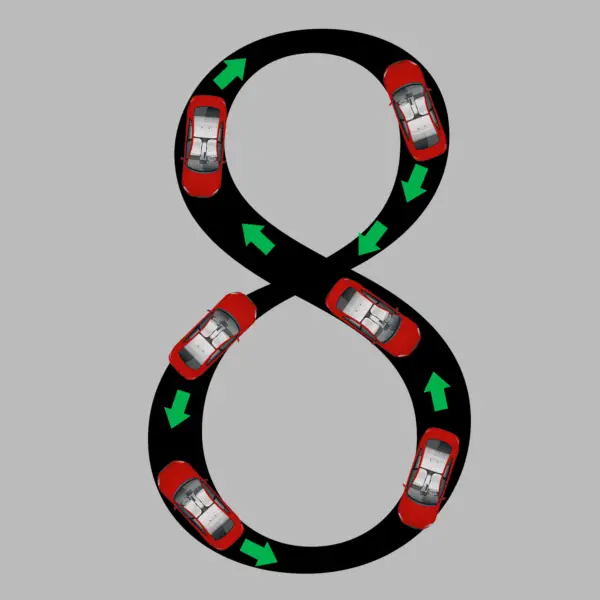
Additional Reversing Exercises For New Drivers
Another way to practice driving backward is simply by backing to the L shape to the right and to the left. This is easier than driving in a backward 8 shape. Don’t forget to practice driving backward in a straight line, too.
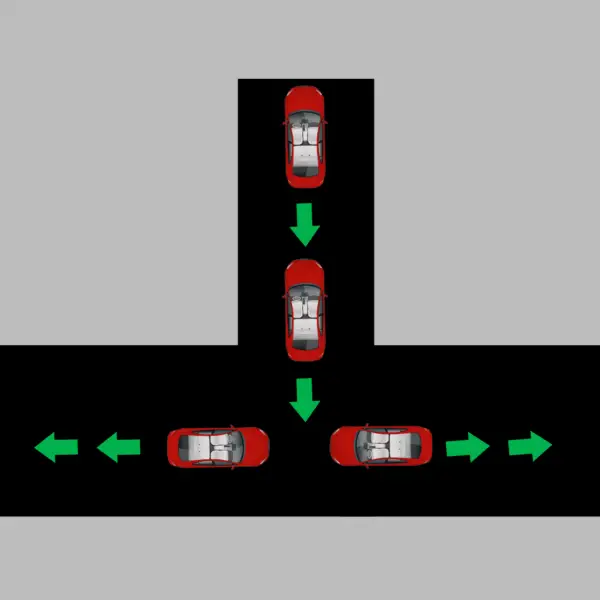
This is an excellent exercise as well. Try doing your backward ‘L’ type shape several times each to the right and left.
All of these crucial exercise help to:
- Teach you about backing, and practice your 360-degree check to make it automatic
- Where to look, how much to turn the wheel, etc.
- Get you in the habit of safe backing
- Prepare you for real car parking
Parallel parking & reverse stall parking aren’t actually that different or hard. But they do tend to be a lot more stressful due to the obvious fact of commonly needing to do them with other traffic around. But they are a lot easier if you’ve learned and practiced these fundamental essentials.
Where To Find Big Empty Parking Lots
These can seem hard to come by sometimes. Check out:
- Malls when they aren’t crazy
- Schools
- Universities
- Church (most tend to be empty on days that aren’t Sunday)
- Walmart, Superstore parking lots
Is It Illegal to Back out of my Driveway?
There is no law against it

There’s no law that says you can’t back out of your own driveway.
Sometimes it is not safe to reverse into your driveway and not possible to turn around once in it; therefore you would have to go forwards into it and would be forced to reverse out of it.
The law says this about reversing
Caution in backing a vehicle
193 The driver of a vehicle must not cause the vehicle to move backwards into an intersection or over a crosswalk, and must not in any event or at any place cause a vehicle to move backwards unless the movement can be made in safety.” (Motor Vehicle Act)
When most people reverse out of their driveway they are simply reversing onto a street mid-block, which is not considered an intersection
An intersection is a place where one road meets with another road; where the road meets with a parking lot, lane, or driveway is not an intersection.
So unless your house is located in the middle of an intersection or ridiculously close to one (anything is possible I guess!) then I can’t see how it would be necessarily illegal to reverse out of your driveway.
Also, when you reverse out of a driveway you may be reversing over a sidewalk, but probably not a crosswalk; the crosswalk is the thing located AT the intersection.
So, make sure it is safe and clear, then reverse
Yes please signal for this. Others may be able to see your signal, including people that you are not aware of – legally you must only signal if there’s someone to signal to.
If you can, reverse into your driveway so that you don’t have to reverse out of it; usually, that is a much safer option with much greater visibility.
When you reverse in, you can check out the space you’ll be reversing into and then reverse; when you reverse out, the space you’re reversing into may be constantly changing.
In instances where you must reverse with poor visibility, get a spotter, or at least sound your horn to alert others
Keep in mind, vehicles exiting driveways (whether it may be forward or backward) are required to yield to road users already traveling down the road.
Keep in mind the basic right of way, though. If a vehicle has already reversed from a driveway onto the roadway and then a vehicle traveling down the road is approaching, the approaching vehicle is now legally required to yield, since the vehicle exiting the driveway was in the space first.
If you see someone trying to reverse out of their driveway and you want to stop and let them out, that is fine – just make sure it is actually safe to stop considering the vehicle(s) behind you, road conditions, etc.
Can I Reverse Out Of Driveway Across Solid Yellow Line?
There is no specific law against this. You are required to make sure it is safe before you reverse and while reversing, and to avoid impeding traffic.
Is it illegal to reverse on the main road?
No, there’s no law in British Columbia against reversing on a main road. If you can do it safely, then it’s legal. As long as you aren’t backing up over a crosswalk or into an intersection, then it’s legal.
Conclusion
Reversing a car is feared by many new drivers. It seems hard enough to drive forwards; how can anyone drive backward? However, it really just is a matter of practice; which is kind of the same as the driving forward thing as well.
Taking the time to do these basic backing exercises is worth every second. It makes your life so much easier when the time comes to actually parallel- or reverse-stall-park, or park on a hill and turn your wheels the right correct way.
Attempting to parallel or reverse stall park without this important foundation can be one of the most confusing things in the world to a new driver.
It’s recommended to mimic real life as much as possible when practicing your backing and parking skills. Some people can drive quite well but have never bothered to back up at all. They’re left with the non-fun task of parking and parking and parking, for hours, until they get it, so they can go pass the road test. How annoying is that?
In real life, we don’t go to the parking lot and park for an hour. We drive somewhere and then we park once when we get there. Then we drive somewhere else and park once when we get there. This is just a much easier method on the brain. Just a suggestion. I know most learners totally don’t tend to do it that way… lol.
Related:
- What to Bring to the Road Test & Fees
- Car Rental & Car Sharing Options
- Get Your ICBC Drivers Abstract FREE (Driving Records)
Carmen Cohoe
Carmen became a driving instructor in beautiful North Vancouver at the age of 22 due to some crazy people who agreed to hire her. After that, there was never a dull moment teaching many different folks from many different places how to drive using automatic and standard vehicles and a minivan.

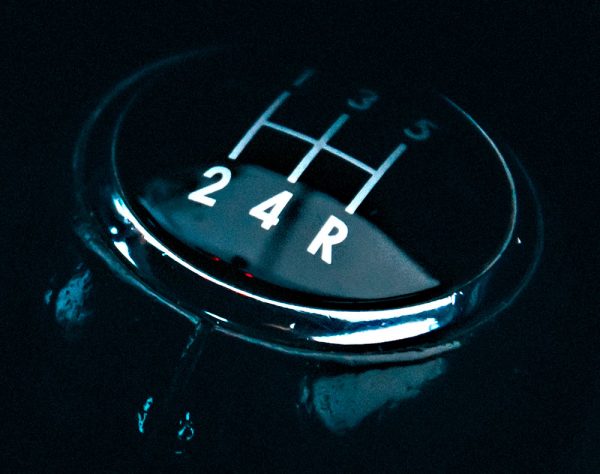

The author really needs to read a how-to guide on bullet points. That. Is. Unbearable.